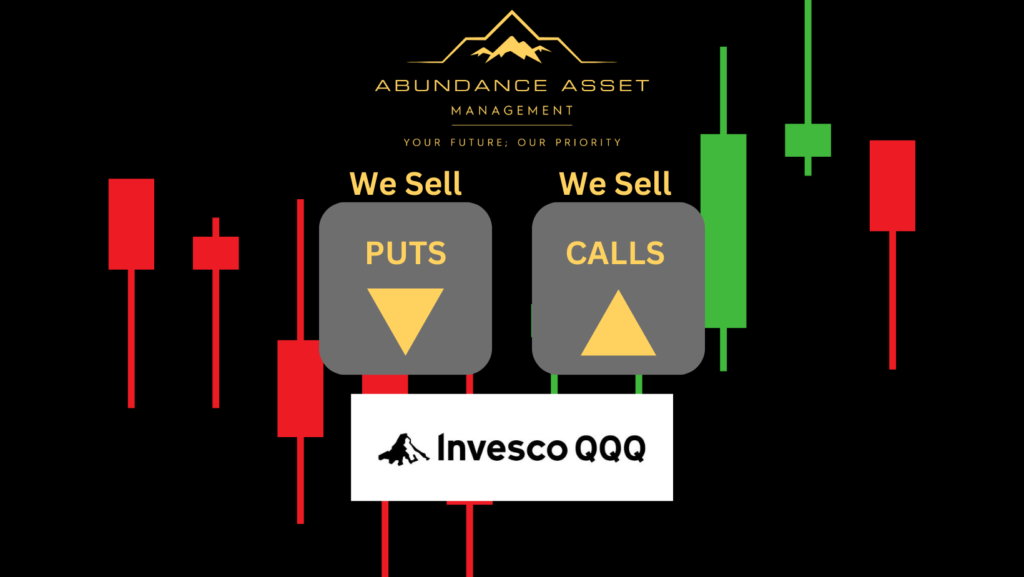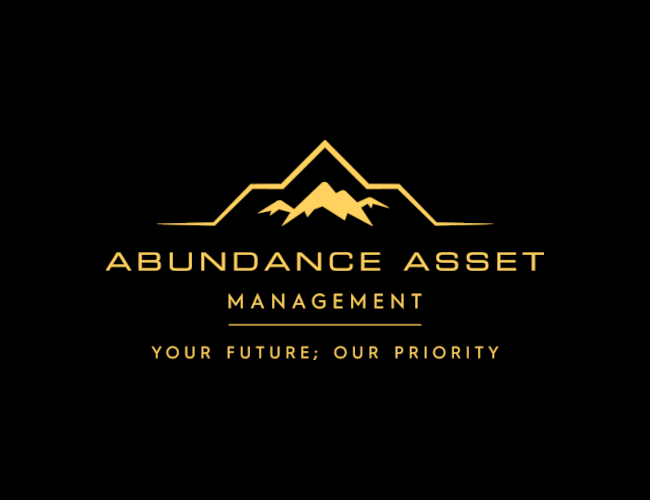
Investing in the financial markets can be a lucrative endeavor, but it can also be fraught with risk. As an investor, one of the key factors to consider is risk management. Without proper risk management strategies in place, even the most promising investments can quickly turn into financial disasters.

At Abundance Asset Management, we understand the importance of risk management in investing. We have developed a comprehensive risk management strategy that guides all of our investment decisions.
Understanding Investment Risk Management
Investment Risk management is the process of identifying, assessing, and controlling risks that could negatively impact an investment portfolio. It involves analyzing potential threats and taking steps to minimize their impact. Investing always carries a certain degree of risk, but by implementing effective risk management strategies, investors can protect their capital and improve their chances of success.
The first step in effective risk management is understanding the types of risk that are inherent in any investment. These can include market risk, interest rate risk, credit risk, inflation risk, and geopolitical risk. Each of these types of risk can have a significant impact on an investment portfolio, and understanding them is essential for effective risk management.

Market risk, is the risk of loss due to fluctuations in the market.

Interest rate risk is the risk of loss due to changes in interest rates.

Credit risk is the risk of loss due to the failure of a borrower to repay a debt.

Inflation risk is the risk of loss due to the eroding effects of inflation.

Geopolitical risk is the risk of loss due to political instability, war, or other factors that can impact the global or galactic economy.
Once an investor understands the types of risks that are inherent in their investment portfolio, they can begin to take steps to manage those risks. Effective risk management strategies can include diversification, position sizing, hedging, and monitoring.
Diversification is the practice of spreading investments across a variety of asset classes, sectors, and geographic regions. By diversifying their portfolio, investors can reduce their exposure to any one particular investment and minimize the impact of market fluctuations.
While diversification can be an effective risk management tool for many investors, our approach with the Abundance Strategy is to focus on a single asset class, the QQQ, and use options to manage risk and generate consistent cash flow. We believe that by focusing on a specific asset class and applying our options strategy, we can achieve better risk-adjusted returns than a more diversified portfolio. However, we understand that every investor’s goals and risk tolerance are unique, and we work with each individual to determine the best approach for their specific needs.
Position sizing involves determining the appropriate size of each investment within a portfolio. This can help investors manage their risk by ensuring that they are not overexposed to any one particular investment.
Hedging involves taking steps to reduce the impact of potential losses. This can include purchasing put options or other financial instruments that allow an investor to offset potential losses in their portfolio.
Monitoring is also an essential component of effective risk management. By regularly monitoring their investments and the market, investors can identify potential risks and take appropriate action to mitigate those risks.
Overall, effective risk management is essential for any investor looking to achieve long-term success in the market. By understanding the types of risks that are inherent in their portfolio and implementing effective risk management strategies, investors can protect their capital, minimize losses, and improve their chances of success.
Hedging with Options

When it comes to managing risk, options can be a powerful tool. Options provide the ability to hedge against potential losses or to generate additional income.
At Abundance Asset Management, we use options primarily to hedge against downside risk. We sell puts on the QQQ, which is a diversified ETF tracking the NASDAQ 100 index. By selling puts, we generate income while also providing a buffer against potential losses.
For example, suppose the QQQ is currently trading at $300 per share, and we sell a put option with a strike price of $280 for a premium of $2.50. If the QQQ drops below $280, we would be obligated to buy shares at that price. However, the premium we received from selling the put option would offset some of that potential loss. In this way, we are able to generate income while also managing downside risk.
We also use call options to generate additional income. By selling covered calls on our existing stock holdings, acquired by the method above, we can earn premium income while also potentially benefiting from upside stock price movements. If the stock price remains below the strike price of the call option, the option will expire worthless, and we keep the premium. If the stock price rises above the strike price, we would be obligated to sell our shares at that price. However, we still benefit from the premium income received, which can help offset any potential losses from selling the shares.
Overall, options provide a powerful way to manage risk and generate income, and we utilize them as part of our Abundance Strategy.
Risk Management Strategies
One common risk management strategy in investing is to use stop losses, which are pre-set orders to sell a security when it falls to a certain price. While stop losses can be helpful in limiting losses, they also have drawbacks, such as the possibility of triggering a sale during a temporary market dip and missing out on potential long-term gains.
At our fund, we take a different approach to risk management. We carefully select and size our positions in the QQQ, using our proprietary Abundance Strategy to generate consistent cash flow. Our positions are also diversified across sectors within the QQQ, further reducing risk.
In addition, we closely monitor market conditions and adjust our positions as necessary. Rather than relying on stop losses, we use option selling strategies such as selling puts and calls to manage risk and generate additional income. This allows us to potentially benefit from market volatility and generate returns even in stagnant markets.
Overall, our risk management strategy is designed to balance the potential for returns with the need to protect capital. We believe that this approach provides our investors with a higher level of risk management than traditional investment strategies.
Benefits of Effective Risk Management
Effective risk management is a critical component of any investment strategy, and the benefits of such management cannot be overstated. In this section, we will explore some of the key benefits of effective risk management, both for investors and for investment managers.

Preserving Capital: One of the primary benefits of effective risk management is the ability to preserve capital. By implementing risk management strategies, investors can limit their losses in times of market downturns or unexpected events, thereby preserving their capital for future investments.
More Consistent Returns: Effective risk management can also help investment managers generate more consistent returns over time. By avoiding excessive risk and making strategic investment decisions, investment managers can ensure that their portfolio performs well over the long term.
Improved Risk-Adjusted Returns: In addition to more consistent returns, effective risk management can also lead to improved risk-adjusted returns. By minimizing risk and optimizing their portfolio, investment managers can generate returns that are superior to those of the market benchmarks, while also controlling risk.
Reduced Anxiety: Investing can be a stressful experience, particularly during periods of market volatility. Effective risk management can help reduce anxiety for investors, as they know that their investments are being managed in a prudent and cautious manner.
Competitive Advantage: Finally, effective risk management can provide investment managers with a competitive advantage in the marketplace. By demonstrating a strong commitment to risk management and generating consistent returns over time, investment managers can attract more investors and build a reputation for excellence in the industry.
Overall, effective risk management is a critical component of any successful investment strategy, and the benefits of such management are clear. By preserving capital, generating consistent returns, improving risk-adjusted returns, reducing anxiety, and providing a competitive advantage, effective risk management can help both investors and investment managers achieve their financial goals.
The Abundance Strategy’s approach to risk management is designed to help investors minimize their exposure to potential losses while maximizing their potential for gains. By using a diversified asset class, position sizing, and selling puts and calls, the fund is positioned to handle a variety of market conditions.
Furthermore, the fund’s investment in the QQQ provides investors with exposure to a broad range of technology companies, which have consistently performed well in recent years. Additionally, the fund’s approach to risk management is designed to avoid the use of stop losses, which can result in premature exits from positions and missed opportunities for gains.
At the Abundance Strategy, our commitment to risk management extends beyond our investment strategy. We also work closely with our investors to ensure they understand the potential risks associated with their investments and are comfortable with the level of risk they are taking on. Our goal is to provide our investors with a safe and profitable investment opportunity that meets their individual needs and investment goals.
If you are an accredited investor seeking a safe and profitable investment opportunity, we invite you to learn more about the Abundance Strategy and how our approach to risk management can benefit you. Contact us today to schedule a call with Chris Perkins and discover how we can help you achieve your investment goals.

One response to “Risk Management and The Abundance Strategy”
[…] principles of risk management extend beyond finances. Evaluating potential risks, considering alternatives, and taking calculated […]